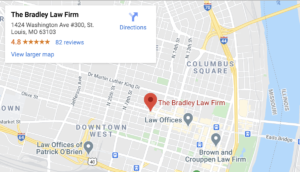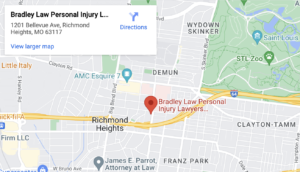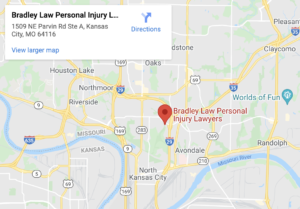
It is sometimes easy to assess how an accident happened and who should be blamed. If a driver runs a red light and hits another driver who had a green light at the same intersection, then it could be easy to point the finger at the driver who ran the red. If the other driver, however, did something to cause the car accident such as being drunk or speeding, then an assessment of how much each side contributed to an accident will likely be needed.
If it is unclear who is at fault in an accident, then the legal term of contributory fault can become important. If it appears that more than one driver is responsible for an accident, then a determination has to be made regarding how much each driver was at fault. This determination can have a significant effect on the outcome of a negligence case. If you have legal questions, then it is important that you speak to an experienced personal injury attorney in St. Louis.
Table of Contents
There Are Different Ways to Handle Shared Fault
Each state has its own method for handling fault in personal injury claims and lawsuits. Money is at issue in these cases, and how much money each party can be awarded is dependent on the law the state follows. If more than one person contributed to an accident that caused injuries, then it is important to understand how fault is determined in your state.
There are three methods that states follow in determining fault in personal injury claims:
- Contributory fault
- Comparative fault, and
- Modified comparative fault.
Identical facts for a case filed in different states can result in different outcomes. The standard of fault in each state can determine how much compensation a claimant can receive.
Contributory Fault Explained
Contributory fault is a harsh standard that is followed in only four states and Washington D.C. Under contributory fault rules, you cannot recover money for injuries if you in any way contributed to your accident.
This means even 1% of fault results in 0% compensation.
Luckily, if you are making a personal injury claim in Missouri, you will not be facing this standard.
Comparative Fault Explained
Comparative fault can be further divided into two separate types known as pure comparative fault and modified comparative fault.
Missouri is one of the twelve states that follows the pure comparative fault standard. Under a pure comparative fault system, your financial recovery is limited by how much you contributed to an accident.
For example, if you suffer $100,000 worth of damages in an accident and the Court finds that you are 40% at fault, then your maximum recovery will be $60,000. Pure comparative fault allows you to be awarded money even if the accident is mostly your fault. If you suffer the same $100,000 worth of damages in an accident but are deemed to be 80% at fault, then you can still receive up to $20,000.
Other states use the modified comparative fault standard. With a modified comparative fault system, sharing fault for an accident is not an automatic bar to financial recovery. But, there is a limit to how much fault you can share and still have the ability to recover compensation. Some states have a 50% bar to recovery, while others have a 51% bar. If you’re allocated fault that meets or exceeds the state’s threshold, then you’ll lose the right to recover damages.
Liability for Others’ Damages
It’s not just about how much your financial award can or will be reduced. Under comparative fault systems, the percentage of fault assigned to you will also impact the degree to which you’re liable for other victims’ damages.
If you’re 30% to blame for an accident, your damages will be reduced by 30%. At the same time, you’ll be on the hook for 30% of the damages sustained by others in that same accident.
How a Personal Injury Attorney Can Help If You’re Being Blamed For an Accident
Because your financial recovery is based on how much you are deemed to be at fault, it is important to have an attorney who understands how to assess fault. An experienced attorney can help you understand contributory negligence under Missouri law and how it will apply to your situation.
They can also step in and defend you against claims that you share the blame. They can work to disprove the claims entirely by discrediting witnesses and gathering evidence that supports your case. Or, if you are partly at fault, they can work to limit how much fault is ultimately assigned to you.
The less fault you share, the more money you can get when your case is resolved.
If you have been injured in an accident, then you probably have a lot of questions about what you should do first. If you have legal questions about your case, then you should speak to a Missouri personal injury attorney right away. To schedule your consultation with one of the experienced attorneys at Bradley Law Personal Injury Lawyers, call us at (314) 400-0000 or contact us online.




